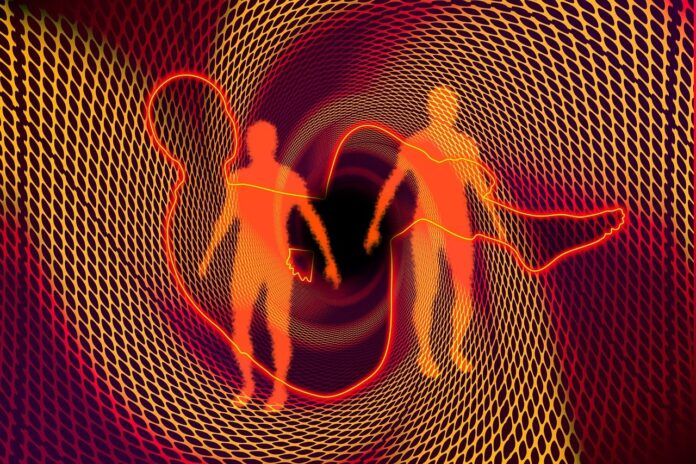
If you’re a trauma victim suffering from PTSD or have an anxiety disorder, EMDR is worth giving a try. Normally, you would want to talk with a therapist first and discuss whether it’s a good option. They are the experts at the matter and can guide better.
Besides taking the traditional route of working with a therapist, you can also try online EMDR and EMDR devices.
How Does EMDR Help Trauma Victims?
EMDR is basically based on the premise that when a person experiences a traumatic event, the pain or negative emotions of the experience hinder the brain’s own healing ability. In many cases, people haven’t been able to process what or why something has occurred.
This often results in the onset of symptoms of PTSD, which may include anxiety, stress, flashbacks, nightmares, anger, or fear. These symptoms can negatively impact the person’s life, affecting their work and personal life.
Therefore, EMDR’s key purpose is to allow the victim to thoroughly process trauma without getting triggered by emotions or other symptoms. This is where bilateral stimulation comes in handy.
In order to reprocess traumatic memories, the person must revisit them in a safe space without feeling the emotional triggers these memories bring. When the therapist uses external stimuli, they create a distraction that brings down the emotional stress and anxiety of revisiting trauma down a few notches.
In most instances, the person may not even need to talk about their trauma extensively, especially if they find it too painful. The goal is to simply manage negative symptoms and move towards something positive.
But that’s not all there is to EMDR. During the later stages of the therapy, trauma victims also learn coping skills and techniques to use whenever they are faced with a situation that triggers their symptoms or reminds them of their experience.
EMDR is an established therapy for treating PTSD, backed by scientific evidence.
How Does EMDR Treat Anxiety?
Anxiety may be a mental condition in its own right, but it’s also a classic symptom of PTSD and complex trauma. Trauma victims often suffer from crippling anxiety that can impact their day-to-day functioning.
As many as 40 million people in the US have anxiety disorders. So it’s something very common that people around you may be suffering from.
When EMDR is used with trauma victims, it also targets their anxiety along with any other symptoms of PTSD.
Even if someone hasn’t experienced trauma but suffers from anxiety, they may find EMDR to be helpful for alleviating anxiety and learning how to cope with it.
While anxiety disorders are diagnosable mental conditions, anxiety itself is an emotion characterized by tension, worry, and even physical changes like a rise in blood pressure, as described by the American Psychological Association (APA).
Just by definition, you can piece together the link between anxiety and trauma. In many cases of anxiety disorders, the underlying cause may just be trauma. This is why many people with PTSD also suffer from anxiety disorders like obsessive-compulsive disorder (OCD) and panic disorder.
EMDR works for anxiety in a similar way as it does for reprocessing trauma. With the use of bilateral stimulation, the therapy allows the client to understand and control their anxiety, as more often than not, it springs from a terrible experience or a phobia of some sort.
Studies have also shown EMDR to be beneficial for treating different anxiety disorders. A pilot study using an advanced EMDR therapy found it to work efficiently for reducing the anxiety of the participants.
A research article published in the Journal of EMDR Practice and Research looked at all the studies on EMDR and anxiety. This article looks at EMDR’s use with different anxiety disorders and found that most studies have positive outcomes.
EMDR is better for treating panic disorders, specific phobias, and, of course, PTSD-related anxiety. While there’s not much research specifically for general and social anxiety, the article proposes that there is potential.
Other Uses of EMDR
EMDR isn’t just for trauma or anxiety, its uses have increased over the decades as therapists have used it for different purposes.
EMDR can also be used for treating depression, dissociative disorders, addictions, and eating disorders.
While EMDR is highly effective for PTSD, its effectiveness varies when it comes to treating chronic trauma or complex trauma. It was essentially designed for PTSD, which often results from a singular trauma event.
However, therapists still use EMDR along with other therapies for treating complex trauma.
Bottom Line
It’s evident that EMDR can help people with trauma and anxiety by helping them reprocess the underlying negative emotions and triggers. Not just that; they can also learn coping exercises that can come in handy anytime symptoms reoccur, which they normally don’t if EMDR was successful.
There are a lot of resources online you can use before going into therapy. However, a therapist can also help answer your questions.

